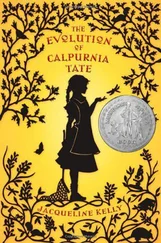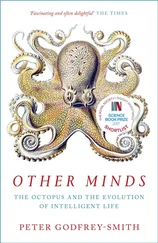B. Minoan Civilization
It is unfortunate that we know so little about the Cretan, or Minoan, civilization, for it has a number of distinctions of considerable significance. It was the first civilization that was not in an alluvial river valley, and, probably as a consequence, it retained its Neolithic Garden culture character more than any other. For one thing, it was peaceful, something that can hardly be said about other civilizations. It remained basically matriarchal, in the sense that women had at least social equality, if not social superiority; its chief deity was female; and women undoubtedly had greater political influence than in any other ancient civilization. Its religion was so unformalized that it had no temples and, so far as our evidence goes, no formal religious ceremonies. And to complete a rather paradoxical picture, its instrument of expansion seems to have been a socialistic state, yet its people, instead of being oppressed and regimented, had an outlook that was remarkably happy, optimistic, and carefree.
The statement that the instrument of expansion of Cretan civilization was a socialistic state is based on the fact that almost all handicraft production, commercial activities, and written records seem to be centered in large public buildings, such as the so-called palace at Cnossus in Crete. The ruins of this prehistoric Pentagon Building were excavated by Sir Arthur Evans after 1900. It is traditional among English archaeologists to call every large building that is excavated either a temple or a palace, and, since Sir Arthur found no evidence of religious ceremonies in this large building, it had to be a "palace" and its resident had to be a "king." This "king," according to Evans, was the legendary "Minos," a Cretan ruler well known in Greek traditions of the historic period. But these traditions seem to indicate that "Minos" was a title (like Pharaoh or President), not a personal name, and that the office was, at least in one period, an elective rather than a hereditary one. Homer tells us quite specifically that Minos served for nine years, so that he could have been a nonhereditary magistrate. This is supported by the evidence from the palace itself, since there is little trace of a personal ruler or of any effort to concentrate power, prestige, or honor about any single individual. Sir Arthur Evans called a small room containing a stone chair the "throne room," but the small size both of room and chair make it look rather like a place where someone might sit down in the morning to tie his shoelaces. There is a great deal of art in the palace, but none of it could be interpreted as "monarchial." In fact, pictures of individuals, especially males, are rather rare. There are some representations of females dressed in what, even today, would be considered daring costumes, but most of the pictures are of nature in its most beautiful moods: the sea, shot through with sparkling sunlight and enlivened with fish, squid, and other forms of marine life; or lake shores with flowers and birds; or wild life in the countryside. Human figures appear occasionally, especially in connection with athletic events, notably with a rodeolike scene in which youths and maidens vault over the head of a bull by grasping its horns and somersaulting over its head, to land on its back—facing rearward—and hop off. This latter scene is frequently explained as a religious ceremony, and it may well be—but here, as elsewhere, there is no centralization of personality such as would almost inevitably appear in a monarchial regime and which is so obvious in other socialistic civilizations such as the Egyptian, the Andean, or the Russian.
1. Mixture
The period of mixture of Cretan society goes back almost to the first settlements on the island, and may continue as late as the third millennium. Rough dates could be set from before 3500 B.C. (perhaps as early as 4000) to after 3000. The elements that came together on this small island of Crete were (1) a mixed group from Anatolia who may have been in the mesolithic cultural stage, with a few early domestic animals and pottery made to look like leather bags; (2) a Neolithic Garden culture of the usual type, the major ingredient in the subsequent Cretan culture; (3) a significant Asiatic influence, possibly associated with the megalithic diffusion, bringing knowledge of metals; and (4) an Egyptian influence, which is sometimes attributed, without evidence, to refugees from the unification of Egypt by Menes, just before 3000 B.C. The last two of these influences continued to flow for much of the early portion of Minoan history, so that Cretan art, for example, continued to show Egyptian influences, while Minoan writing, like that of Mesopotamia, was made by impressions on clay tablets.
These civilizing influences did not change the basic Neolithic Garden foundation of Cretan culture except by building upon it, and the new society remained peaceful and cooperative. The most significant question, which to my knowledge has never been answered (or even asked), is how it was possible for a nonalluvial garden culture to adopt the fully sedentary life necessary for civilized existence. In a blunt sentence: Why did not the early Minoans exhaust the fertility of the soil and have to shift their fields as their neolithic ancestors did? The answer probably is that they developed a new diet which put less pressure on soil fertility. This diet was based on olive oil, grape wine, fish, and wheat, and proved so successful that it has remained the staple diet of the Mediterranean area to the present time. It is a very significant diet in a number of ways beyond its biologic adequacy for man: two of its elements were liquids, obtained from perennial plantings, while a third was derived from the sea. Oil and wine required sedentary farming and, at the same time, created a demand for pottery containers, which undoubtedly gave an impulse to craft specialization in this direction. In the palace at Cnossus was row after row of man-high pottery jars that had been filled with oil, wine, and wheat. The use of fish for the protein element in their diet served to tie the economy to the sea and provided the watercraft and maritime skills that allowed the Cretans to become the commercial middlemen of the Mediterranean basin when the need arose. And it is possible, although not clear from the evidence, that the grain fields could have been refertilized by products from the sea, such as burned seaweed. At any rate the Cretan people in their earliest centuries began to work out an economic system that moved them toward cooperation, specialized activities, and dependence on the sea without population pressure on the soil.
2. Gestation
As in so many civilizations, the period of gestation of Minoan society must rest on inference. The argument that the instrument of expansion was the public authority is itself based on inference, although a fairly obvious one, but we can hardly go behind this inference to any more remote ones about origins. All that we can say is that the cooperative elements of neolithic peasant agriculture were developed in the political security of an island existence and, probably under the influence of the sea, toward the development of a cooperative, nonmonarchical, nonmilitaristic, and nonecclesiastical public authority. We do not know if there was only a single such authority for the whole island or several of them. The archaeological evidence shows several centers in which urban centralized living developed on the island— at Cnossus and Mallia in the north and at Phaistos and Hagia Triada in the south. The existence of "palaces" in all of these does not necessarily indicate separate political units, especially if these buildings were administrative centers, as we have suggested. There is a basic pattern in them all, and the later ones may merely be decentralized administrative centers constructed by one political system. It has been suggested, largely because of the existence of a hard-surface road across the island from Phaistos to Cnossus, that these two were merely seasonal residences for the same ruler.
Читать дальше










